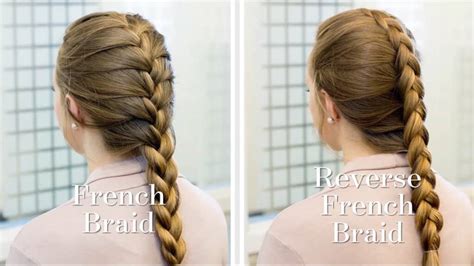French Braid vs. Dutch Braid: A Detailed 7-Point Analysis

A French braid, also known as a “three-strand braid,” originates from France in the 16th century. It is a versatile braid characterized by its intricate intertwining of three strands.
Key Features:
- Three-strand construction
- Hair is added to the braid from the sides
- Presents an elegant and classic look
The Dutch braid, also known as an “underhand braid,” shares similarities with its French counterpart. However, it differs in its weaving technique:
Key Features:
- Three-strand construction
- Hair is added to the braid from underneath
- Gives a fuller, raised effect
1. Appearance:
- French Braid: Elegant, subtle
- Dutch Braid: Fuller, pronounced
2. Weaving Technique:
- French Braid: Hair added from the sides
- Dutch Braid: Hair added from underneath
3. Hair Volume:
- French Braid: Relatively low volume
- Dutch Braid: Higher volume, thicker appearance
4. Braiding Difficulty:
- French Braid: Moderate difficulty
- Dutch Braid: Slightly more challenging
5. Suitability for Different Hair Types:
- French Braid: Suitable for most hair types
- Dutch Braid: Ideal for thicker, longer hair
6. Versatility:
- French Braid: Can be worn in multiple styles (low, high, side)
- Dutch Braid: Limited versatility due to its raised appearance
7. Historical Significance:
- French Braid: Traceable to 16th-century France
- Dutch Braid: Originating in the Netherlands, no specific historical timeline
French Braid:
- Timeless style, adding elegance to any outfit
- Protects hair from damage, preventing breakage
- Enhances hair’s natural texture, creating gentle waves
Dutch Braid:
- Crates a voluminous, eye-catching look
- Ideal for adding height and dimension to hairstyles
- Provides a secure hold, keeping hair in place for extended periods
The distinction between French and Dutch braids lies in their weaving techniques, which impact not only their appearance but also their suitability for different occasions.
- French braid: Suitable for formal events, everyday wear, or as a protective style.
- Dutch braid: Perfect for creating dramatic, elevated hairstyles for special occasions or festivities.
French and Dutch braids, while similar in construction, offer unique aesthetics and benefits. Their versatility makes them adaptable to various hair types and personal styles. By understanding the nuances between these two beloved braids, one can confidently choose the perfect braid for any occasion.
